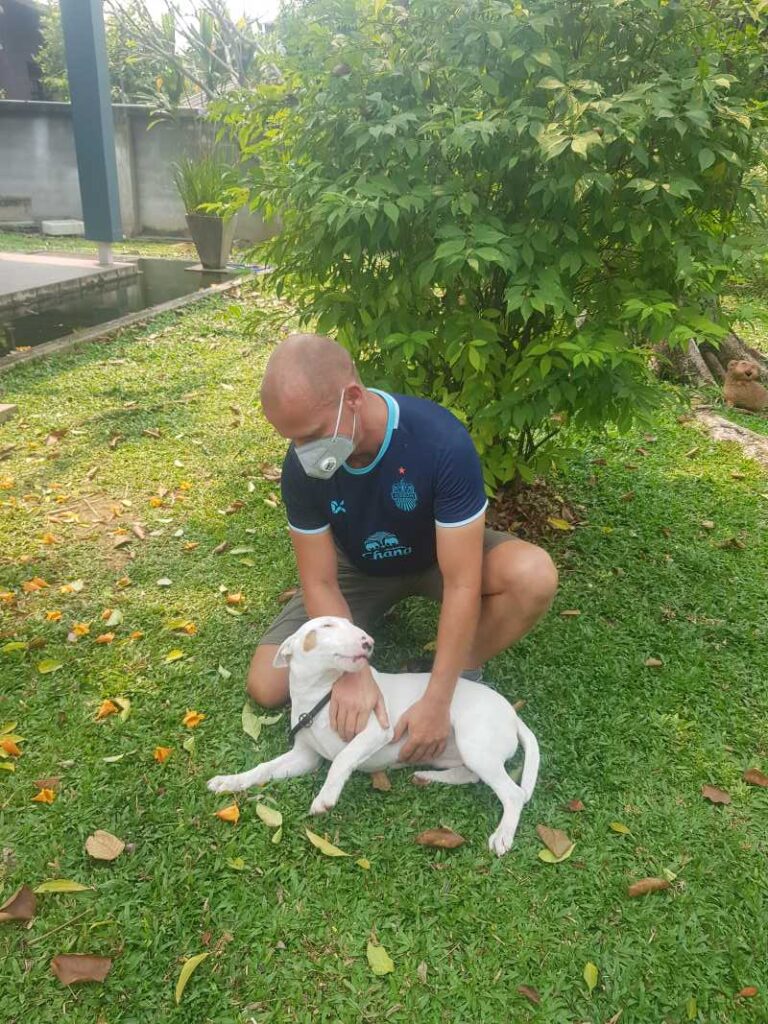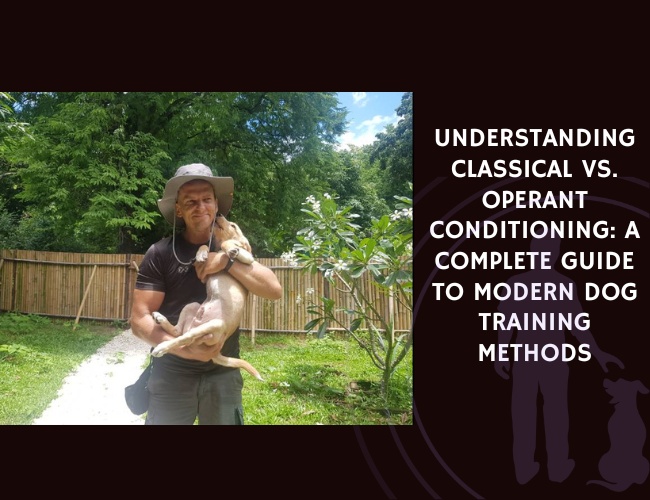Introduction to Dog Training Psychology
Understanding How Dogs Learn
Dog training is not just about teaching commands—it’s about understanding how a dog’s mind works. Psychology gives us valuable insights into how dogs see the world, learn new things, and adapt their behaviors. When we understand these principles, we can guide our dogs kindly and effectively. It is not simply about obedience; it’s also about helping dogs feel confident and safe as they learn.
Why Learning Theories Matter
You might be wondering why a deeper understanding of learning matters. Dogs, like people, learn through experience. By studying learning theories, trainers and pet parents can set clear expectations, avoid confusion, and help dogs succeed. These theories allow us to pick the right approach for each situation—whether we’re building confidence, correcting unwanted behaviors, or encouraging new skills. Without a solid grasp of these ideas, training can be inconsistent and less effective.
Conditioning and Canine Behavior
There are two major types of learning that shape your dog’s behavior:
- Classical conditioning connects one thing with another, creating emotional responses. For example, your dog can learn to feel excited when hearing their leash jingle.
- Operant conditioning is all about consequences. Dogs repeat behaviors that bring rewards and avoid those that bring unpleasant results.
Both types of conditioning work together. When used wisely, they help foster understanding and trust between you and your dog. This positive connection builds a strong foundation for learning and a happy, well-adjusted companion.
Let’s explore the roots of these powerful principles in the next section.
Classical Conditioning: The Foundations
Understanding the Basics
When we’re training dogs, it helps to know how their brains connect things in the world. Classical conditioning is a key principle here. This idea began with Ivan Pavlov, a scientist who studied how animals learn by linking things together. He found that when a neutral event—like a bell—happens before something important—like getting food—the animal can start reacting to the neutral event all on its own.
Let’s break down the key parts:
- Neutral stimulus (NS): Something that does not naturally cause a response, like a bell before a dog knows what it means.
- Unconditioned stimulus (US): Something that naturally prompts a reaction, such as food.
- Unconditioned response (UR): The natural reaction to the unconditioned stimulus, like salivating when food is present.
- Conditioned stimulus (CS): After pairing, the NS becomes a CS, like the bell meaning food is coming.
- Conditioned response (CR): The new reaction to the CS, such as the dog salivating when it hears the bell, even if there’s no food yet.
How It Works in Dog Training
Pavlov’s famous experiment showed that if he rang a bell (NS) just before feeding his dogs (US), the dogs started to salivate (UR) at the bell alone. With repetition, the bell became a conditioned stimulus (CS) and the salivation became a conditioned response (CR), even without the actual food.
This kind of learning shapes a lot of how dogs respond to everyday things. For example, if a dog hears a doorbell (NS) every time visitors arrive (US), it may start to get excited (CR) just at the sound of the bell—even if the person hasn’t come inside yet.
Understanding how these connections form is the first step in helping create a calm, responsive companion. This knowledge sets the stage for exploring other ways dogs learn and grow with us.
Operant Conditioning: Learning Through Consequences
Understanding Operant Conditioning
Operant conditioning is a powerful way dogs learn from the outcomes of their actions. This approach, developed by behavioral psychologist B.F. Skinner, focuses on how behavior is shaped through consequences. Simply put, dogs repeat behaviors that lead to good results and avoid actions that bring unpleasant outcomes. Skinner’s research showed that consistent application of consequences helps shape lasting habits in animals, including our canine companions.
Reinforcement and Punishment Explained
Let’s break down the main tools in operant conditioning—reinforcement and punishment. Reinforcement means making a behavior more likely to happen. This can happen in two ways:
- Positive reinforcement: You add something your dog likes, such as a treat or a happy “good dog!”
- Negative reinforcement: You take away something your dog finds annoying, like releasing pressure on a leash when your dog stops pulling.
Punishment does the opposite. Its goal is to make a behavior less likely. Again, two forms are used:
- Positive punishment: You add something unpleasant, like a “no” or a gentle leash correction.
- Negative punishment: You remove something your dog wants, such as taking away attention or a toy.
Real-Life Example: Teaching Sit
Think about teaching your dog to sit. Each time your dog’s bottom touches the ground after you say “sit,” you offer a treat. This treat is positive reinforcement and makes your dog want to repeat the action. Over time, your dog learns, “Sitting gets me good things!”
We’re here to help you see that operant conditioning is all about choices and their outcomes. Understanding these basics will help set the groundwork for more advanced training methods and ensure your dog learns in a positive, consistent way. 🐾

Key Differences Between Classical and Operant Conditioning
Understanding the Core Contrasts
When we look at how dogs learn, it’s essential to see how classical and operant conditioning shape behavior in different ways. Let’s break down the main differences so you can use both methods wisely in your training.
Triggers and Learning Focus
Classical conditioning is all about pairing. A dog learns to connect two things, like a bell and food, through repeated exposure. The focus here is on making associations between events or stimuli happening in the environment. The dog’s response is often involuntary, such as salivating or feeling excited when hearing a specific sound.
Operant conditioning works differently. Here, dogs learn by doing. Their own actions lead to outcomes—like getting a treat or being ignored. The learning focus is on the consequences of the dog’s behavior, shaping responses that are voluntary and intentional.
Passive Pairing vs. Active Behavior
Classical conditioning involves passive stimulus pairing. The dog is not required to act for the learning to occur. Instead, emotions or physiological reactions are triggered by the paired signals. For example, thunder (neutral at first) might end up causing fear if it’s often paired with a loud noise.
Operant conditioning is more active. The dog must do something—a behavior must occur—for learning to happen. The result (a reward or punishment) then makes that behavior more or less likely next time.
Involuntary vs. Voluntary Outcomes
Classical conditioning produces involuntary reactions. Think of things like fear, excitement, or calmness. These aren’t choices the dog makes—they just happen after the stimulus pairing.
Operant conditioning shapes voluntary behaviors. Sitting, staying, or coming when called—these are choices a dog makes based on what happens afterward.
Why These Differences Matter
Knowing these differences helps you choose the right approach. Addressing emotional responses starts with classical conditioning, while specific skills or manners use operant methods. Both are powerful when used with consistency and kindness.
Let’s continue building your training toolkit by exploring how these ideas are applied in real-world dog training.
Classical Conditioning Applications in Dog Training
Desensitization Techniques for Fear and Anxiety
Many dogs struggle with fear or anxiety triggered by ordinary things, such as loud noises or strangers. Desensitization offers a gentle and supportive way to help them cope. This process involves exposing your dog to the scary thing (like thunder or the vacuum) at a very low level where they feel safe. Pair this with something they enjoy—treats or praise often work best. Over time, as your dog remains calm, you can gradually increase the intensity of the trigger. The key is patience and observing your dog’s comfort level. If your dog starts to show signs of stress, go back to an easier step. This method helps many dogs feel more relaxed in situations that once caused anxiety.
Counterconditioning for Changing Emotional Responses
Sometimes, dogs have already learned to feel afraid or nervous about certain situations, like visiting the veterinarian. Counterconditioning changes how your dog feels about that scary thing by turning it into a predictor of something positive. For example, if your dog dreads the sound of the car keys, you can offer treats every time the keys jingle. With enough repetition, your dog can start to look forward to the sound, associating it with something pleasant instead of stress or worry. This approach offers hope, and many pet parents see real changes in their dog’s emotional reactions.
Clicker Training as a Practical Tool
Clicker training is a wonderful example of classical conditioning in action. The clicker—a small, handheld device that makes a clicking sound—starts as a neutral stimulus. You teach your dog what the click means by pairing the click with a reward every single time. Soon, the clicker itself becomes a positive signal. Just hearing the click fills your dog with happy anticipation because it consistently predicts a reward is coming . This technique makes training more clear and fun for both you and your dog.
With these tools, you can gently and effectively shape your dog’s emotional responses, setting the stage for deeper learning and a happier life together.
Feel. Act. Learn.
Two Paths to One Mind
Dogs learn through feelings and feedback. Classical conditioning shapes emotional responses—like excitement or fear—while operant conditioning teaches behavior through rewards and consequences. Together, they form the blueprint of how dogs think, react, and grow.
More Than Obedience
Training isn’t just about commands—it’s about clarity and connection. When you understand both emotional triggers and behavioral patterns, you build a calm, confident learner who trusts you every step of the way.



Smart, Kind, Effective
Modern dog training blends empathy with evidence. By using both conditioning methods, you create a learning experience that’s not only effective, but also emotionally supportive—for a dog that learns because it feels safe.
Operant Conditioning Applications in Dog Training
Teaching Obedience with Positive Reinforcement
Operant conditioning shines when you want to teach your dog everyday commands like sit, stay, or come. Positive reinforcement is a key ingredient here. When your dog performs a desired behavior, such as sitting on cue, you immediately reward them with something they love—usually a tasty treat or cheerful praise. This simple act tells your dog, “Yes! That’s what I want!” and makes them more likely to repeat the behavior in the future. Remember, timing is everything. Deliver the reward right after the action so your dog makes the connection.
Shaping Complex Behaviors Step by Step
What if your dog needs to learn a more complicated task, like fetching a toy from another room or performing a fun trick? “Shaping” is your friend. Instead of waiting for the full behavior to appear, you reward small steps along the way. For example, you might first reward your dog for looking at the toy, then for taking a step toward it, then for picking it up. With each successful step, you move a little closer to the goal, turning a daunting challenge into a fun game 🐾.
Modifying Unwanted Behaviors
Dogs, like people, sometimes develop habits we’d rather they didn’t—think jumping up, barking, or pulling on the leash. Operant conditioning helps here too. Reward the behaviors you want, like greeting calmly or walking nicely beside you. For unwanted actions, you might use “negative punishment” by withholding attention or removing a treat when the misbehavior occurs. This consistency helps your dog understand what works and what doesn’t, making life more enjoyable for both of you.
Helping your dog understand the world through careful teaching builds trust and cooperation. As we continue, let’s look at how emotions also play a vital role in behavior.
The Interplay Between Classical and Operant Conditioning
Understanding the Two Sides of Learning
Dog training is most effective when we appreciate how emotional experiences (classical conditioning) impact choices and actions (operant conditioning). These two methods work together in real-world situations, shaping both your dog’s feelings and their decisions. This partnership often creates lasting change—and a deeper bond between you and your dog.
How Emotions Drive Choices
Let’s start with a relatable scenario. Imagine your dog hears the doorbell. Over time, your dog learns to associate the doorbell with the exciting arrival of guests. The sound of the doorbell (originally neutral) becomes a trigger for excitement through classical conditioning.
Now, picture what happens next: Your excited dog might jump on the arriving visitor. If the visitor responds with attention or petting, your dog’s behavior is reinforced through operant conditioning. So, the initial feeling (excitement) leads to an action (jumping), which is then encouraged by a rewarding consequence (attention). Both processes are at work, shaping future behavior.
Real-World Examples in Everyday Life
Here are more examples of how these learning types interact:
- Leash reactivity: A dog may become tense when seeing another dog, based on past scary encounters. This tension (classical) makes lunging more likely. If the dog gets moved away from the trigger (operant), the lunging may be reinforced.
- Recall training: Pairing a whistle with treats builds a positive feeling about coming when called (classical). Returning to you for a treat is then reinforced each time it’s rewarded (operant).
- Veterinary anxiety: Smells and sounds of the clinic become linked to fear (classical). Refusing to enter—if it means the visit ends sooner—can reinforce the avoidance (operant).
When you recognize both emotional triggers and behavior patterns, you can create a more supportive, effective training plan. This brings us to practical examples and new approaches for real-world training situations.

Practical Training Scenarios Breakdown
Leash Reactivity: Seeing the Problem from Both Sides
Let’s look at leash reactivity—a situation where a dog barks, lunges, or pulls upon seeing another dog or person. This behavior often has roots in both emotional reactions and learned responses.
On the classical side, your dog might have paired the sight of another dog (neutral stimulus) with past tense moments, like an unpleasant encounter (unconditioned stimulus). Over time, this leads to tension or fear (conditioned response). When your dog sees another pup, these emotions bubble up, making calm behavior hard.
On the operant side, the behavior itself—lunging or barking—can be unintentionally reinforced. If your dog lunges and is then pulled away, the feeling of relief from leaving the situation actually strengthens the yelling and pulling. This is called negative reinforcement. Recognizing both sides helps you design training that calms emotions and changes behaviors.
Recall Training: Blending Methods for Success
Recall, or “come when called,” benefits from both conditioning types. Dogs often learn to associate your recall cue (like a whistle) with good things, such as treats or play. This is classical conditioning in action—the cue itself becomes a happy signal.
Next, when your dog returns and is greeted with a favorite toy or praise, you use positive reinforcement (operant conditioning) to make coming back worth it. Clear, joyful cues mixed with great rewards build strong recall skills.
Veterinary Anxiety: Easing Fear With Science
Many dogs feel anxious about vet visits. Here, classical conditioning is about changing emotional associations—pairing the vet’s waiting room with treats or play shifts a negative experience to a positive one.
For operant conditioning, good behavior like calm sitting can be rewarded during the visit. Over time, consistent rewards reshape your dog’s outlook and behavior, making vet trips friendlier for everyone. 🐾
By addressing both feelings and behaviors, you support your dog’s well-being and make progress possible.
Common Misconceptions and Clarifications
Rethinking “Passive” Classical Conditioning
One frequent misunderstanding is believing classical conditioning is a passive process. While stimulus pairing might seem simple, the emotional reactions it produces—like excitement, fear, or calm—are powerful and can shape how a dog reacts in training and daily life. If a dog learns to feel anxious whenever it sees a leash, that’s not passive at all! Emotional responses can drive or block learning, so recognizing this impact is essential for trainers and pet parents alike.
When Operant Conditioning Goes Wrong
Many people assume that using treats or scolding always brings quick results. However, operant conditioning relies on clear, consistent timing. If rewards or corrections are delayed or not predictable, dogs can become confused. This confusion may even create new unwanted behaviors. For instance, if a dog is scolded long after the unwanted behavior occurs, it won’t connect the consequence to its action—leading to more frustration for everyone.
The Power of Timing and Consistency
Let’s address why timing and consistency matter so much. Dogs need immediate feedback to understand what they did right or wrong. When trainers consistently reinforce the same behaviors and respond clearly, dogs gain confidence and learn faster. Skipping or mixing up cues leads to uncertainty and stalls progress.
A thoughtful, evidence-based approach considers both emotional responses and learned behavior. Using these methods together helps dogs feel safe, clear, and motivated—essential ingredients for positive learning experiences. 🐾
Understanding these truths supports a stronger foundation for every training journey, fostering empathy and steady growth for dogs and their humans.
Integrated Training Approach: Best Practices
Combining Emotional and Behavioral Focus
We’re here to help you see that effective dog training addresses both what dogs feel and what they do. Emotional responses matter just as much as the behaviors you want to change. For example, if a dog is fearful of loud noises, simply ordering it to “sit” won’t help if the fear is overwhelming. That’s where combining classical and operant conditioning comes in—using both for a well-rounded approach.
Proactive Strategies to Prevent Emotional Fallout
Our goal is to assist you in creating a thoughtful training plan that prevents unwanted stress or emotional setbacks. Begin by recognizing triggers that cause anxiety or overexcitement. Desensitization and counterconditioning can help your dog feel more at ease around those triggers. Use positive reinforcement, like treats and praise, to encourage calm and confident behavior. Avoid punishment-based methods, as they can increase fear and erode trust.
- Identify emotional triggers
- Use gradual exposure paired with rewards
- Track progress to adjust as needed
This careful design minimizes negative experiences and helps your dog build positive associations, leading to stronger, happier learning.
Empathy and Evidence Guide Great Training
Developing an empathetic and evidence-based approach means thinking from your dog’s perspective. If a training plan isn’t working, ask why. Is your dog too anxious? Are the rewards motivating enough? Adjusting your methods based on your dog’s needs ensures kindness and success. Research shows that integrating both classical and operant techniques not only changes behavior but also supports emotional well-being, leading to confident, well-behaved dogs.
Dog training works best as a supportive partnership. Each step you take can build trust and shape positive behaviors 🌟. By understanding your dog’s emotions and actions, you’re preparing for a lifetime of enjoyable learning together.
Conclusion: Creating Positive Learning Experiences
Building the Foundation for Success
Creating a positive learning experience for your dog is about more than just teaching commands. By understanding both classical conditioning and operant conditioning, you are better equipped to support your canine companion in every aspect of life. Remember, classical conditioning taps into your dog’s emotions and associations with the world around them, while operant conditioning helps shape their choices and actions through consequences. When you combine these powerful tools, you unlock a truly holistic method for fostering growth and confidence.
The Value of Dual Understanding
Mastering both conditioning styles means you can recognize when your dog is experiencing a strong emotional reaction and address it with compassion. For example, if a dog becomes excited at the sound of a doorbell (classical conditioning) and then jumps on visitors for attention (operant conditioning), you’re prepared to address both the excitement and the behavior. This approach not only prevents confusion but also supports your dog’s emotional wellbeing.
Empathy, Timing, and Consistency
Effective trainers know that empathy, timing, and consistency are key. Positive learning happens when you are patient and observant, rewarding good behaviors and gently guiding your dog through their anxieties. Avoiding emotional fallout, such as fear or frustration, is possible by offering clear signals and steady support. Remember, your dog is learning not just what you want them to do, but how to feel about the process.
Creating Lasting Confidence
Every session is a step toward a more confident, well-adjusted dog. With careful use of both classical and operant conditioning, you can help your furry friend feel safe, eager, and understood. The real magic comes from blending both methods—using them together to nurture obedience and emotional balance.
🐶 Let’s continue nurturing joyful, secure learning experiences for every dog, every day.



